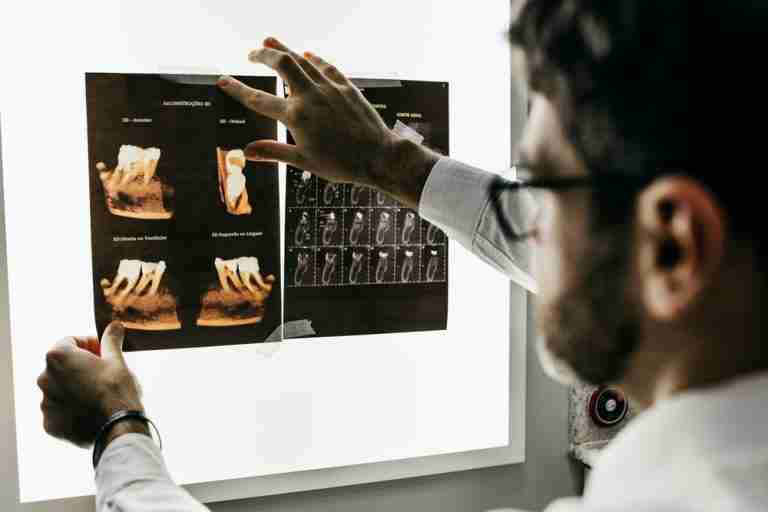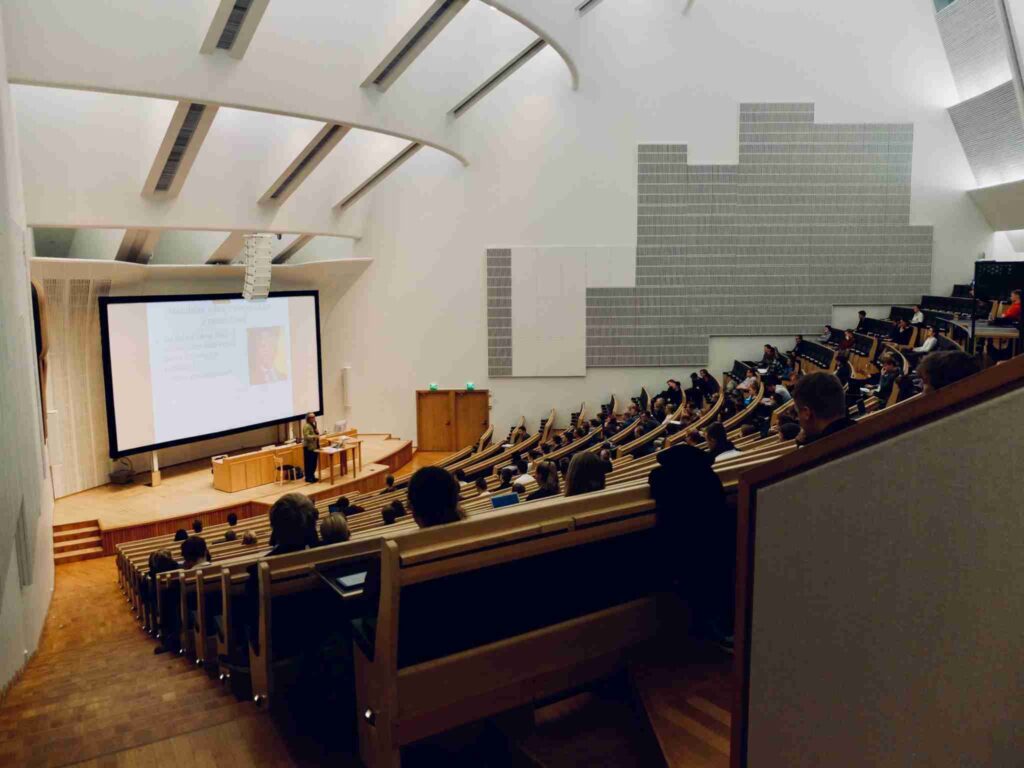Dental care is a main concern in a person’s overall health. That’s why if you want to keep your teeth healthy and beautiful, it is important to know certain things about dental care and its specialties. Today we’ll talk about prosthodontics.
This complete guide will help you understand what a Prosthodontist does, the differences between prosthodontists and general or cosmetic dentists, and the benefits of treating your oral health with a practitioner specialized in dental prosthetics.
What is a Prosthodontist?

Prosthodontists are practitioners who have followed a 3-4 year post graduate program and have completed their certification as Prosthodontics specialists.
Prosthodontics is an ADA certified specialty that allows dentists to specialize in restorative and replacement procedures.
Basically, a prosthodontist is a specialist who designs, manufactures and fits any type of restorative prosthetics for patients with damaged or missing teeth.
The American College of Prosthodontists clearly explains their aim when they state that they promote the “advanced study and practice of implant, esthetic and reconstructive dentistry“.
So, from dental implants, bridges and crowns to dentures and veneers, prosthodontists have the expertise to develop a treatment plan to restore a patient’s mouth in the most functional and aesthetic way.
What is Prosthodontics?
The ADA defines Prosthodontics as follows:

“Prosthodontics is the dental specialty pertaining to the diagnosis, treatment planning, rehabilitation and maintenance of the oral function, comfort, appearance and health of patients with clinical conditions associated with missing or deficient teeth and/or oral and maxillofacial tissues using biocompatible substitutes.”
In other words, when we talk about Prosthodontics we refer to the area that can handle dental treatments involving prostheses or restorations.
For patients with damaged or missing teeth, or with Maxillofacial (jaw) issues, Prosthodontics is the area that will provide specialized oral care.
Dental Specialty: Prosthodontics vs. General Dentistry
Many people are not sure about the difference between prosthodontists and general dentists.
They wonder if it makes a difference between choosing one over the other.
The first thing to know is that while it is true that a prosthodontist and a general dentist sometimes perform the same procedures, there is quite a difference in what they can do, as well as their training.
They belong to two differentiated fields.
Broadly speaking, a general dentist deals with preventive and routine procedures. They can do cleanings, check ups, fix cavities, and any other routine procedures.
A prosthodontist, on the other hand, can perform these general procedures, but can go a step further.
As board certified specialists, prosthodontists perform more complex treatments such as implants, crowns, dentures, oral surgery, and maxillofacial issues.
It’s not that your dentist can’t perform these procedures also. It’s that prosthodontists are highly skilled in prosthetics and restorations.
Their job is to design, manufacture and fit any type of restorative prosthetics for patients with damaged or missing teeth. There are some that manufacture their own dentures!
But let’s see the difference more in detail.
We can analyze the difference from different perspectives:
Training and Accreditation:
- A General Dentist is accredited after finishing their studies at a dental school. Later, they can take courses, for example, in cosmetic dentistry. The American Academy of Cosmetic Dentistry provides further training courses in this field.
- Prosthodontists receive the regular instruction at a dental school, but keep on studying to complete a 3-4 year dental specialty training. They are accredited in Prosthodontics by the American Dental Association.

Procedures:
A general dentist performs preventative and more simple dental procedures. They treat general issues such as: tooth decay, broken or chipped teeth, dental fillings, cleanings and general checkups.
A prosthodontist can deal with the general procedures listed above, but often focus on more complex restorative procedures (tooth replacement methods) such as:
- dental implants
- dental crowns
- bridges
- full or partial dentures
- oral surgery (eg. implant surgery)
- TMJ treatment (jaw bone treatment)
- And, of course, the general routine treatments.
Prosthodontist vs. Cosmetic Dentist
When we are looking for a dentist to treat our oral health, we may tend to get confused by so many terms referring to dental professionals.
When it comes to the fields of Prosthodontics and Cosmetic Dentistry, here are some of the differences:
Any general dentist can perform cosmetic treatments by developing skills and training in cosmetic procedures.
If a dentist wants to carry out cosmetic treatments, they can take training courses on cosmetic dentistry at the American Academy of Cosmetic Dentistry, for example.
Cosmetic dental treatments can make your mouth look natural and beautiful.

However, this is not specialty recognized and accredited by the ADA. Cosmetic Dentistry is General Dental Practice applied to make your smile more aesthetic.
Prosthodontics, instead, is a dental specialty recognized and certified by the American Dental Association.
Like Endodontics, Periodontics or Pedodontics (dentist for children), Prosthodontics is among the twelve dental specialties recognized by the National Commission on Recognition of Dental Specialties and Certifying Boards.
To become a prosthodontist, dentists need to follow three to four years of training. Once they complete their programs, they get the certificate that accredits them to perform a wide range of restoration and replacement procedures.
Prosthodontic treatments may also include the reconstruction of maxillofacial tissues, and in some cases, oral surgery.
In fact, most prosthodontic programs nowadays incorporate training in dental implant placement and restoration. So, in most cases, prosthodontists don’t need to do a separate course on implantology to do implants.
When working on restorations (whether it is a crown, a dental implant or a simple filling), a prosthodontist will also focus on the “cosmetic” aspect of the treatment, since it is an essential part of prosthodontics.
A good restoration will not only make your teeth function well. It will also make your teeth look perfectly natural in shape, size and color, giving you a perfect smile.
So Prosthodontists can perform general , cosmetic and prosthodontic (restorative/reconstructive) procedures in the most accurate and precise way due to their specialized training.
So, When Do I Need To See a Prosthodontist?
You should probably see a prosthodontist when:
- you have missing teeth, or have suffered tooth loss
- your damaged teeth need to be replaced
- You need to restore the root of your missing or damaged teeth with implants
- you need to maintain or fix prosthetic devices (eg. dentures)
- You´re having problems with your jaw (TMJ disorders)
- You want to renew your smile, not only to make it more beautiful, but also functional.
- When you have other complex dental conditions arising from cancer treatments, traumatic injuries or birth defects.

In the last few decades, there have been amazing developments in techniques and materials. Thanks to these innovations and to their highly-qualified training, prosthodontists can make your smile look perfectly natural and functional.
Sometimes, the speed at which we live makes us want to cope with our dental problems in the short term.
But why not see a dental professional who can provide you with comprehensive oral health care in the long term and in the best possible way?
What Does a Prosthodontist Do?

A Prosthodontist can perform any preventative and routine procedure, like checkups, fillings and dental cleanings.
But along with this general work, they have the knowledge and skill to perform more complex treatments where replacement teeth are needed.
These are some of the most common procedures performed by prosthodontists:
Implants: metal posts or frames implanted into your jawbone to allow a crown to fit on this post. The cap placed on the implant will look and function as natural tooth.
Crowns: Crowns are caps placed on a tooth or implant to look and function as a natural tooth. There are many types of dental crowns according to different needs.
Bridges: where there are teeth missing, a bridge can restore and replace those missing teeth. Typically they take the form of crowns on either side of the missing tooth, and they hold the “pontic” (or false) tooth. Bridges are the most popular options to fill the gap when there are missing teeth.
Full Mouth Reconstruction: In cases where patients need to reconstruct their smile on a larger scale, many different restorative options are available to fully reconstruct their mouth.
Dentures: acrylic base prostheses placed over gums when a full or partial set of teeth are missing. Today there are removable or fixed, partial or full.
Veneers: a thin piece of porcelain layer used to provide your mouth with a natural look, and give them strength. Veneers are placed and fixed on the damaged tooth’s enamel.
Jaw Treatment: Treatment of jaw bones and tissues due to TMJ (temporomandibular joint) disorders, or other causes of pain.
Dental Surgery: Dental and Maxillofacial surgeries needed due to birth defects, problems resulting from cancer or traumatic injuries.
In Conclusion, What Are the Benefits of Seeing a Prosthodontist?
- A prosthodontist knows exactly how to deal with the replacement and restoration of missing teeth. They also have the knowledge to make them look perfectly natural.
- A Prosthodontist knows exactly how to make your teeth get their usual normal functions. Your teeth not only need to look good, but function well. That’s why aligning the bite is so important.
- With improved gums, bite and smile, your whole body health (and self-esteem) will benefit. You’ll chew better, enjoy your meals and look amazing.
As the American College of Prosthodontists puts it: “Everyone can enjoy the confidence, fullness of life, and overall well-being that comes from a healthy mouth and an attractive smile.”
Prosthodontist FAQs
What Procedures do Prosthodontists Do?
They perform all the replacement and restorative treatments when there are damaged or missing teeth. These include crowns, bridges, veneers, implants and full mouth rehabilitations. Some also deal with maxillofacial issues arising from different causes, such as accidents or cancer treatments.
Can a Prosthodontist Perform General Dental Treatments?
Yes, they can. And in fact, many of them do. Because of their graduate and post graduate instruction, prosthodontists have the general knowledge to perform general treatments such as check ups, cavity fillings, etc. But they have the skills to do treat more complex cases, such as implants, crowns and full mouth rehabilitations.
Will My Insurance Cover the Cost of my Prosthodontist Visit?
Typically, dental insurance covers general dentistry treatments. However, depending on the case, type of insurance and company, some patients may get coverage for restorative treatments such as crowns or dental implants. The best way to know if your insurance will cover your treatment is to get the information directly from your dental provider.
Can a Prosthodontist Extract Teeth?
Yes, they can do extractions. Patients need extractions in extreme cases where a tooth is severely damaged or where there is periodontal (gum) disease. Extractions may also be needed when preparing your mouth for restorative treatments such as implants or dentures, for example.
Does a Prosthodontist Do Dental Implants?
Absolutely. Other dentists may perform dental implant treatments if they have taken courses and training in that area. But with prosthodontists, you make sure the practitioner has had specific and professional training for at least three years to place dental implants (and any other tooth replacement method).
Can a Prosthodontist Do Dentures?
Yes. In fact, given that a prosthodontist is a board certified professional trained to do this kind of procedure, he or she is the best dentist for dentures. They have qualified training to carry out, manufacture, fit and place dentures in the most effective way.